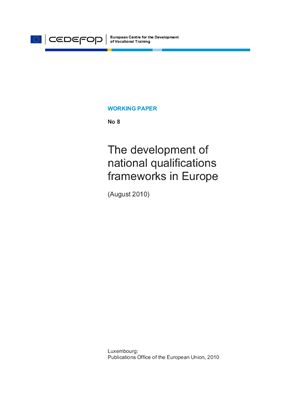European Centre for the Development of Vocational Training, 2010
-
193.s
Reproduction is authorised provided the source is acknowledgements.
This Cedefop report covers the development of national qualifications frameworks (NQFs) in the 27 members of the European Union, in two candidate countries to the EU (Croatia and Turkey) and in Iceland and Norway. It confirms the importance and priority attributed to NQFs across Europe. While this can be explained partly by the EQF and set deadlines, countries increasingly tend to see NQFs as key instruments influencing national policies and reforms in education, training and employment.
All the 31 countries covered by the report aim to develop and introduce a national qualifications framework for lifelong leaing responding to the EQF. The majority of these countries aim for comprehensive frameworks covering all levels and types of qualifications and seeking a stronger integration between them. This is a significant result as it shows an increased attention to the overall coherence and permeability of education and training systems and their ability to promote lifelong and lifewide leaing.
193.s
Reproduction is authorised provided the source is acknowledgements.
This Cedefop report covers the development of national qualifications frameworks (NQFs) in the 27 members of the European Union, in two candidate countries to the EU (Croatia and Turkey) and in Iceland and Norway. It confirms the importance and priority attributed to NQFs across Europe. While this can be explained partly by the EQF and set deadlines, countries increasingly tend to see NQFs as key instruments influencing national policies and reforms in education, training and employment.
All the 31 countries covered by the report aim to develop and introduce a national qualifications framework for lifelong leaing responding to the EQF. The majority of these countries aim for comprehensive frameworks covering all levels and types of qualifications and seeking a stronger integration between them. This is a significant result as it shows an increased attention to the overall coherence and permeability of education and training systems and their ability to promote lifelong and lifewide leaing.

